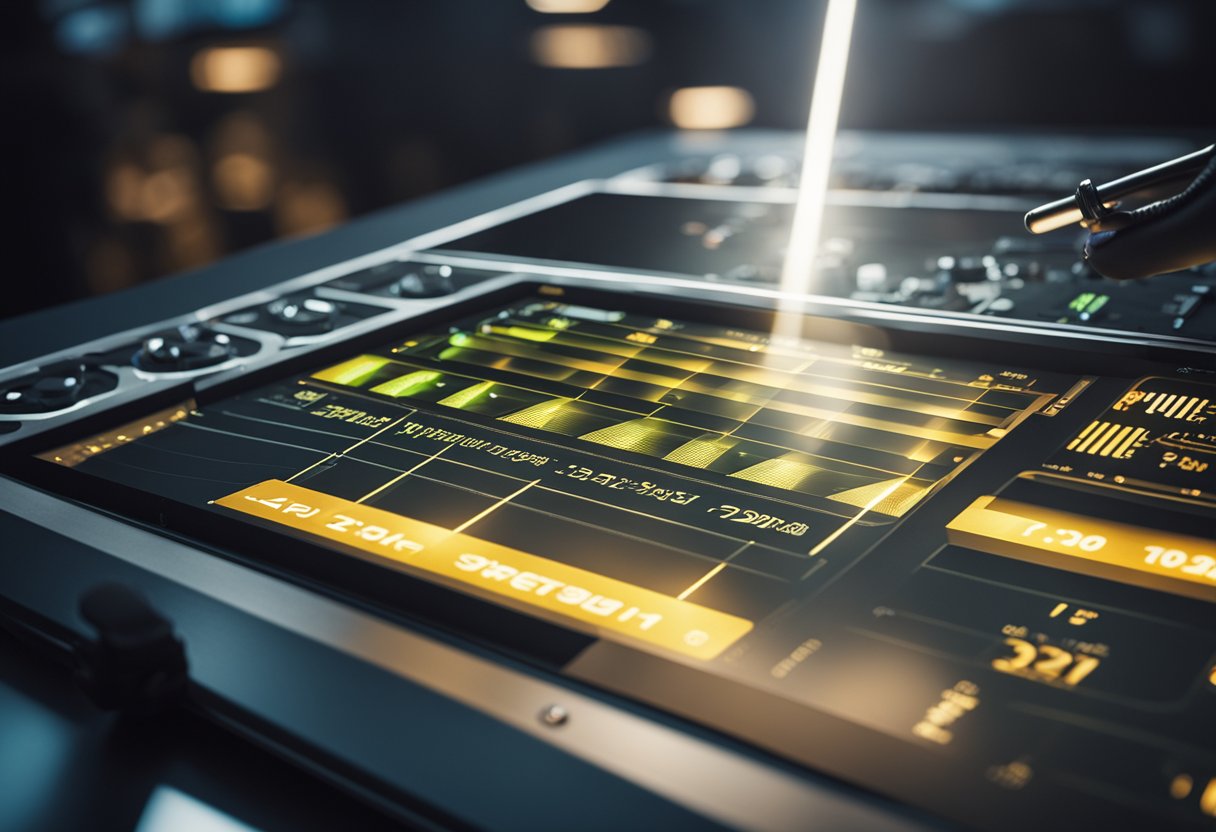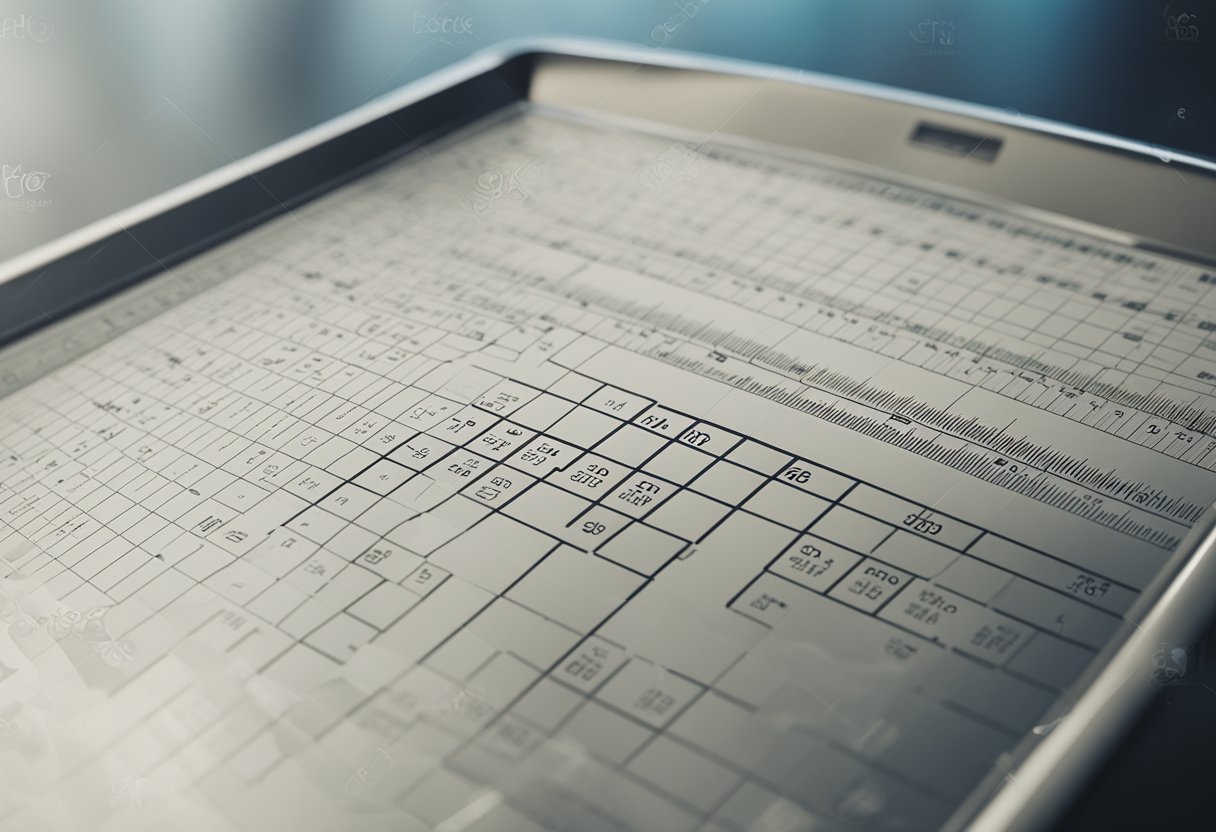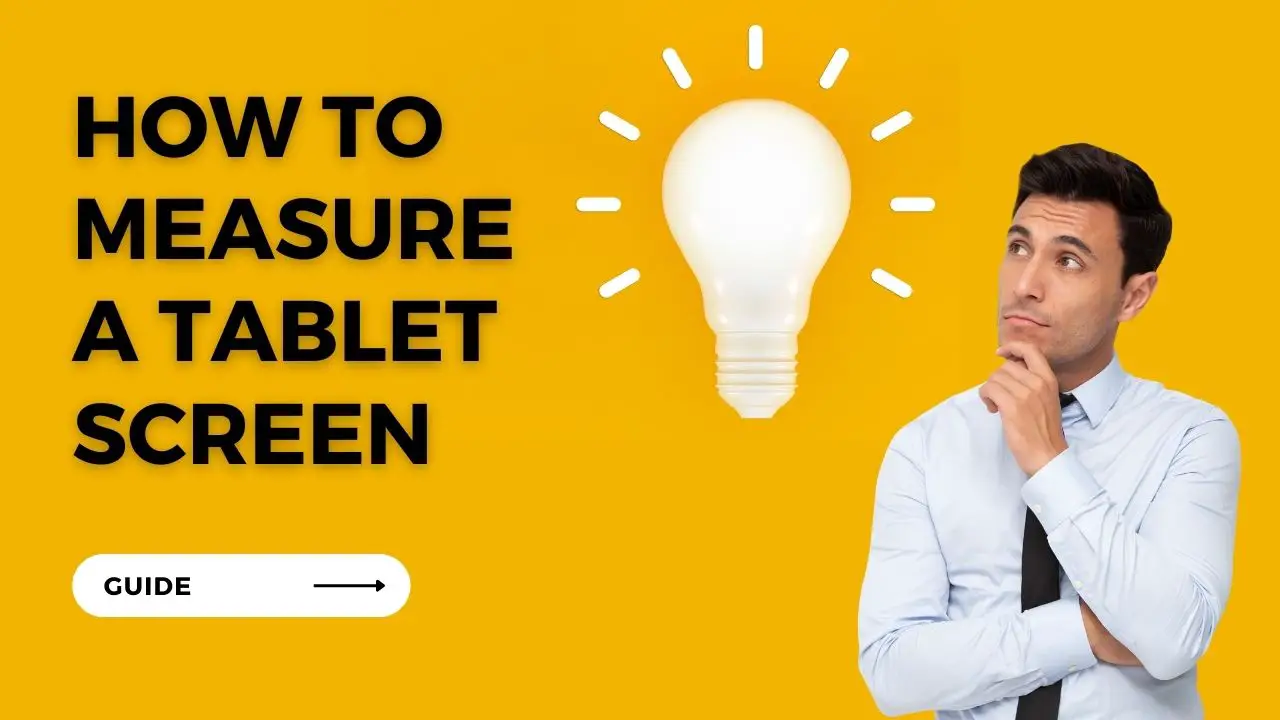When selecting a new tablet, one essential factor to consider is the screen size, as it impacts the overall user experience. Screen size is typically measured diagonally from corner to corner of the actual screen, not including the bezel or the tablet’s frame. A larger screen may be more suited to watching videos and multitasking, while a smaller screen may be preferred for its portability and ease of use with one hand.

To measure the screen size of a tablet, you need a ruler or a tape measure. You measure the diagonal length of the actual display area, which usually starts from the top left corner to the bottom right or vice versa. It’s crucial to measure only the screen and not any part of the surrounding bezel. This size is typically given in inches and will guide you in making an informed decision based on your intended use, from media consumption to professional tasks.
Key Takeaways
- Screen size, measured diagonally in inches, is key to the tablet experience.
- A larger tablet screen maximizes viewing and multitasking, while a smaller one enhances portability.
- Precise measurement of the display area is critical when choosing a tablet.
Contenuti
Understanding Tablet Screen Measurements
In the evaluation of tablets, specific dimensions such as screen size are critically assessed for their impact on usability and portability. This section explains how to ascertain these measurements accurately.
Importance of Tablet Screen Size
The size of a tablet screen significantly influences the device’s usability and portability. A larger screen may provide a more immersive experience for media consumption and productivity, while a smaller one enhances lightweight mobility. Screen size is typically the diagonal measurement of the display area, impacting both the visual appeal and the device’s handling.
Standard Tablet Screen Dimensions
Tablet screens come in various standard sizes, commonly ranging from 7 inches to 12 inches, measured diagonally. The screen dimensions are a deciding factor for the overall tablet dimensions, which include width, length, and depth. A tablet’s screen-to-body ratio, which expresses the screen size relative to the size of the entire device, can influence a user’s choice.
Measuring Tablet Screen Size Manually
Measuring a tablet screen size manually requires a tape measure or a ruler. To determine the screen’s diagonal length, one should measure from one corner of the screen to the opposite corner, ensuring the measuring tool follows a straight line across the display. Calibration of the measuring device should be verified beforehand for an accurate measurement. Recording the width and length additionally helps in understanding the screen’s aspect ratio and the display’s overall shape.
For precise manual measurement, the following steps are applicable:
- Place the tablet face-up on a flat surface.
- Extend the tape measure from the bottom left corner of the screen to the top right corner.
- Record the diagonal measurement.
- Measure the screen width from left to right, and the screen length from top to bottom separately for additional dimensions.
Be mindful to measure only the screen area, excluding bezels or the tablet’s casing. These measurements assist in determining suitability for specific applications and user preferences.
Selecting the Right Tablet Screen for Your Needs
When choosing a tablet, consumers must consider the balance between screen size and portability to cater to their specific needs whether for entertainment, productivity, or a mix of both.
Screen Size and Portability
Tablets come in a range of sizes, typically measured diagonally in inches. Smaller tablets, often in the 7-8-inch range, are valued for their compactness, fitting easily into a purse or bag. They are ideal for reading books or web browsing on the go. In contrast, larger tablets, which are 10 inches or more, provide an enhanced viewing experience for watching movies but may sacrifice some portability due to increased size and weight. Consumers should assess the height and aspect ratio of the tablet to ensure it aligns with their comfort and portability needs.
Entertainment and Productivity
For users focused on entertainment, a larger screen provides an immersive experience. Movies, games, and art applications benefit from a more expansive display. When it comes to productivity and multitasking, a larger screen can be equivalent to a laptop, allowing for efficient switching between apps and windows. Users can make precise selections if a tablet offers a high pixel density or PPI (pixels per inch). However, larger screens can be more expensive, so users should weigh the importance of screen size against price.
Comparison with Laptop Screens
When comparing tablets to laptops, remember that while laptops typically offer larger screens conducive to long hours of work and complex tasks like presentations, tablets offer a blend of entertainment and productivity in a more compact form. Tablets boast touchscreens, which can aid creative tasks or casual use like web browsing. Those who frequently travel or commute may find tablets are more portable than laptops, making them a solid option for staying productive while on the move. However, the decision should reflect the primary use-case scenarios of the individual, with entertainment users potentially benefitting more from a tablet’s convenience over a laptop.
Factors Affecting Tablet Screen Experience

Selecting a tablet involves more than picking a brand; the nuances of the screen significantly shape the viewing experience. Users must consider how resolution and design elements like bezels and thickness can enhance or detract from their usage.
Resolution and Display Quality
Tablet screens are defined by their resolution, which is the number of pixels that compose the display. Higher resolutions mean more pixels, leading to sharper images that improve the viewing experience, especially when watching high-definition content like Netflix. For instance, Samsung tablets often feature high-resolution displays, making them suitable for users who prioritize screen clarity. It’s important to note that, typically, a higher resolution can result in a more vivid and immersive experience.
- Resolution Levels (Typical for Mid-Sized Tablets):
- HD: 1280×720 pixels
- Full HD: 1920×1080 pixels
- Quad HD: 2560×1440 pixels
- 4K Ultra HD: 3840×2160 pixels
When considering screen resolution, one must also be mindful that a bigger screen requires a higher resolution to maintain image clarity.
Design Considerations in Tablet Screens
The physical design of tablet screens deeply affects usability. Bezels, the frame around the screen, vary in size. Tablets with thin bezels can offer a more expansive display area, making the device’s face appear all screen, which enhances the immersive experience for activities like gaming or using a stylus. However, some users may prefer thicker bezels for easier handling and to reduce accidental screen touches.
Users should also account for the manual handling of the device—the thickness and weight of a tablet, along with any curved edges, contribute to its ergonomics and comfort during extended use. Aesthetics play a role too, as design features can appeal differently to individual users depending on their personal preferences and how they intend to use the tablet.
Frequently Asked Questions

In this section, readers can find answers to common inquiries about measuring tablet screen sizes, including techniques for measuring screen size and resolution, and understanding tablet dimensions.
How is the screen size of a tablet determined?
The screen size of a tablet is typically determined by measuring the diagonal length from one corner to the opposite corner.
What is the standard way to measure the diagonal length of a tablet screen?
To consistently measure a tablet screen’s diagonal length, one uses a ruler or measuring tape, starting at the bottom left corner and extending to the upper right corner or vice versa.
How can you find out your tablet’s screen resolution?
The tablet’s screen resolution can usually be found in the device’s settings under the display section or in the product’s original documentation.
What steps should you take to choose the correct case size for your tablet?
To select the correct case size, measure the tablet’s height, width, and depth, ensuring the case dimensions align with those of the tablet.
How are tablet dimensions typically represented for consumer understanding?
Tablet dimensions are usually represented in inches for the screen size and in height by width by depth for the body size, making it easier for consumers to understand and compare.
What method is used to calculate the screen size of a Samsung tablet?
The screen size of a Samsung tablet, much like other tablets, is calculated by measuring diagonally across the screen from one corner to the opposite corner.
